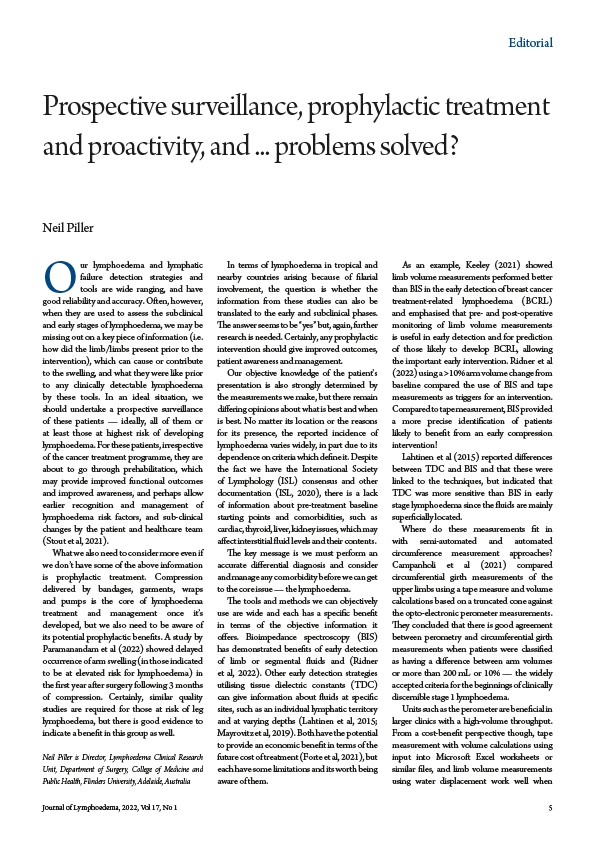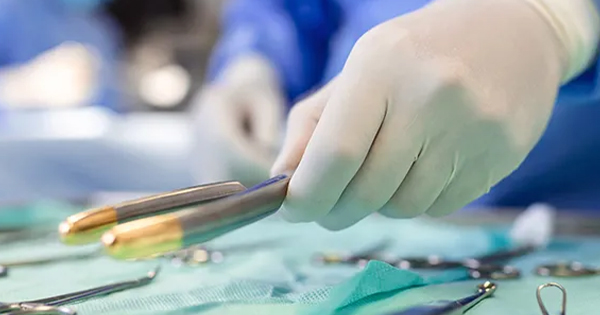Our lymphoedema and lymphatic failure detection strategies and tools are wide ranging, and have good reliability and accuracy. O!en, however, when they are used to assess the subclinical and early stages of lymphoedema, we may be missing out on a key piece of information (i.e. how did the limb/limbs present prior to the intervention), which can cause or contribute to the swelling, and what they were like prior to any clinically detectable lymphoedema by these tools. In an ideal situation, we should undertake a prospective surveillance of these patients ” ideally, all of them or at least those at highest risk of developing lymphoedema. For these patients, irrespective of the cancer treatment programme, they are about to go through prehabilitation, which may provide improved functional outcomes and improved awareness, and perhaps allow earlier recognition and management of lymphoedema risk factors, and sub-clinical changes by the patient and healthcare team (Stout et al, 2021).





